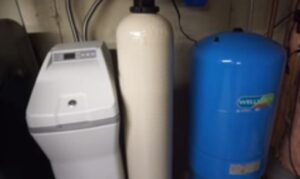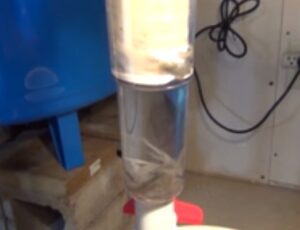How To Improve Water Well Recovery Rate
The recovery fourth dimension of the well is defined as the time required for a well to stabilize at the static water level after the pumping has been stopped. The recovery rate may vary from one well to another well. Some wells may recover inside an 60 minutes, others may need more time.
What is the Static H2o Level?
When a well has not been pumped for at least 12 hours, the h2o level in the well is chosen static water level. It is the normal and undisturbed water level in the well. Read more almost information technology.
What is Menstruation Rate?
Flow rate is the volume of water that your pump can withdraw from the well. It depends on the h2o level and the pump ability. Menstruum rate is measured in gallons per 60 minutes or gallons per minute.
Factors which Affect the Well Recovery Charge per unit
The following factors affect the well recovery charge per unit.

Pumping Duration – Pumping duration negatively impacts the well recovery rate. When you pump more than water from a well, its static level goes down further than normal, and it takes more time to accomplish its static level.
Pumping Rate – The rate at which the water is pumped from the well also impacts the recovery charge per unit. When you lot are pumping the water at faster speeds even for less fourth dimension, it will negatively impact the well recovery rate.
Aquifer and Well Properties – The nature of the aquifer from which the well is getting water matters a lot. If information technology has a large water potential, your well's recovery rate will be faster. Similarly, the depth of the well also influences the recovery charge per unit. If the well is properly built and deep plenty to tap a huge water potential, information technology will recover quickly.
Ecology Factors – Ecology factors also bear upon the recovery rate. If your surface area is facing drought, less rainfall, and high temperature, the clandestine water book will decrease steadily. It volition, in turn, pb to a slow recovery rate.
Number of Wells on a Single Underground Source – If your neighbors are getting h2o from the same aquifer or stone equally you are, all of the wells will likely feel a deadening recovery rate. The reason is that a single h2o source will be supplying water to more than than one well, and it will create a ho-hum recovery rate and flow rate problems.

Slime Buildup – Slime buildup from mineral deposits and iron bacteria can too decrease the well recovery rate. When deposits are formed on the openings of the stone and aquifer supplying water to your well, recovery rate decreases, and well yield reduces.
Clogged Well Screen – A clogged screen may besides exist the reason behind the wearisome recovery rate. Information technology is possible that sediment deposits on the well screen will not permit water to enter the well at a faster rate despite the cloak-and-dagger source having a big water potential.
How to Ameliorate the Well Recovery Rate?
Increasing the well recovery rate is a part of the well rehabilitation program. To increase the recovery rate, the following techniques can be used.
Water Conservation – You must offset from the nuts. Attempt h2o conservation, limit the utilize of h2o, and reduce the pump power and pumping fourth dimension. Don't put too much stress on your well at ane single time. Run your well pump with intervals then that the h2o level does not become too low. Information technology will reduce the time taken for the water to get below the static level.
Well Inspection – If the recovery rate is depression due to a blocked well screen, a new well screen volition do the work for yous. Information technology will increase the recovery rate by assuasive more water to pass through it.
Chemical Cleaning Methods – To remove the slime deposits in the well and on the underground rocks, chemical cleaning is used. Acidic solutions are introduced in the well; they remove the deposits at the base of the well, and are then pumped out from the well. Similarly, chlorine is too used to remove iron bacteria buildup on the rock surface. Chlorine is besides used to disinfect the well.
Hydrofracking –Hydrofracking is a technique used to remove sediment and open adjacent rocks to obtain more water for your well. The sediment will gather at the lesser of the well and reduce the well replenishment rate. Hydrofracking uses a high-pressure water stream. It is immersed in the well and helps in removing sediment and opening adjacent rocks for a faster recovery rate,
Deepening the Well – Another way to increase the recovery rate is to deepen the well. It is possible that the water level has depleted, and your well takes a lot of time to recover afterward pumping.
Relocating the Well – The terminal solution is relocating the well. A new well will help you tap a new and probably filled source of an underground source of water. A new well must exist your concluding strategy, every bit it is costly. If you program to drill a new well, make sure you do it according to the state regulations and ensure that the old well is properly plugged.
Terminal Words
We propose that you hire the services of licensed drillers to increase the well recovery rate. Information technology is possible that yous may suffer from colored water or sediment after modifications in the well. EPA suggests that you become your water tested afterward every repair or modification to the well.
How To Improve Water Well Recovery Rate,
Source: https://wellwatergeek.com/how-to-improve-well-water-recovery-rate/
Posted by: reynoldsfoure1965.blogspot.com


0 Response to "How To Improve Water Well Recovery Rate"
Post a Comment